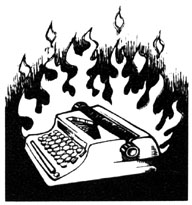This is the awful phrase that sticks with me from Officer
Darren Wilson’s testimony before the Grand Jury on Sept. 16, 2014.
‘All I see is his head and that’s what I shot. I don’t know how many. I know at least once because I saw the last one go into him. And then when it went into him, the demeanor on his face went blank, the aggression was gone, it was gone, I mean, I knew he stopped, the threat was stopped.’
“The threat was stopped.” It’s a war-movie phrase, a video game
phrase, a comic book phrase, a dehumanizing phrase. The target was destroyed.
The enemy was neutralized. The threat was stopped.
It’s not the only shoot-‘em-up, caricatured reference Wilson
used in his testimony. He described grappling with Michael Brown as “like a
five-year-old holding onto Hulk Hogan.” To him, the teenager’s face was twisted.
“It looks like a demon,” he told the Grand Jury.
Here’s another version of those fateful seconds, from a Grand
Jury witness who testified on Oct. 13, 2014. He saw the incident from inside
his car, which pulled up just behind Officer Wilson’s SUV and he initially thought
that Michael Brown had a gun and was engaged in a shootout with the policeman. He
saw Brown run away, then stagger, stop, turn around, and take “three, maybe
four steps” back towards Wilson.
“Q. What happens then? A. The officer unloaded on him.
"Q. What do you mean by that? A. I mean, he fired four or five shots in rapid succession. He gunned him down.”
Perhaps the actuality of what happened in Ferguson that
sunny day was so horrific that the cop and the witnesses could only fall back
on sentences that seem scavenged from SVU or Scarface or Grand Theft Auto. Those words
offer the possibility of a more heroic, storybook, uncomplicated reality.
But there’s nothing heroic or storybook about what went on
along those twin yellow-brick lines running down the center of Canfield Drive in
Ferguson, Missouri.
Michael Brown needed prosecutors and the Grand Jury to serve as his executors. Not simply to assign blame, but to face head-on, unblinking, without comic book language, the implications of the awful event that spun so wildly out of control.
That's now our task.
Michael Brown needed prosecutors and the Grand Jury to serve as his executors. Not simply to assign blame, but to face head-on, unblinking, without comic book language, the implications of the awful event that spun so wildly out of control.
That's now our task.




No comments:
Post a Comment